Could you start by telling us a little about how you first fell in love with art?
My architect-uncle Jim Moon built Bornholm in Hobart in 1961, a magnificent piece of modernist architecture filled with modern art and Danish furniture. I remember standing halfway up the stairs as a small child staring at a painting of solid marks at least 3 or 5 centimetres thick, like brushed concrete.
Did you study fine arts or are you self-taught?
I studied Fine Arts at the University of Tasmania from 1995 to 2011, finishing with a Doctorate in Philosophy (Fine Arts). I taught myself to draw hyper-realistically by copying black and white photographs when I was nine, and made things constantly with hand tools, like the pocket knife I used to whittle wood. My aunt also taught me how to see by looking through a camera lens to differentiate between tonal changes of light.
Where are you based?
I moved to Melbourne two years ago to be closer to my family. My studio occupies two bedrooms of the house, and the walls and floor are now covered in paint splatters. I walk every evening; our neighbourhood has no street light or city light interference, and I study the colours of the sky in the natural half-light.
How do you view the artwork you create?
I view all artworks as objects, with a deep-rooted love for producing large geometric forms. I imbue these objects with life; the sides of my paintings are often orange so that, when hung, they reflect warmth onto the wall to give the sense of an object with inner vitality.
What inspires you, and when do you feel most creative?
I work best in the morning. Between 1 to 3pm is when I may make mistakes, but sometimes I can’t stop creating. I draw inspiration from the poetry of words and phrases in the music or podcasts I listen to. When the piano beckons me I know I’m about to have inspiration for something creative too, the music melding with daydreams that cause me to free associate, and triggering the beginning of a work. It’s then that I start mixing colours until a colour emerges that I know intrinsically is the one I want.
What materials do you use and why?
I won the Qantas Art Award in 2013, and as a self-directed part of the prize, I worked with an industrial chemist to make metallic paint for artists using mixing powders used by the car industry. This was before they became available in art shops. Since then, I have continued with the same method of making paint using pigment powder with mixed mediums. The final coats of paint are made using oil paint mediums in thin glazes to build up luminosity. My paintings are on a birch ply square format or an object made from wooden pieces. I like the rigid feel of brushing upon the wood, and I can sand back areas and drill into the surface to attach objects and wires if I wish.

